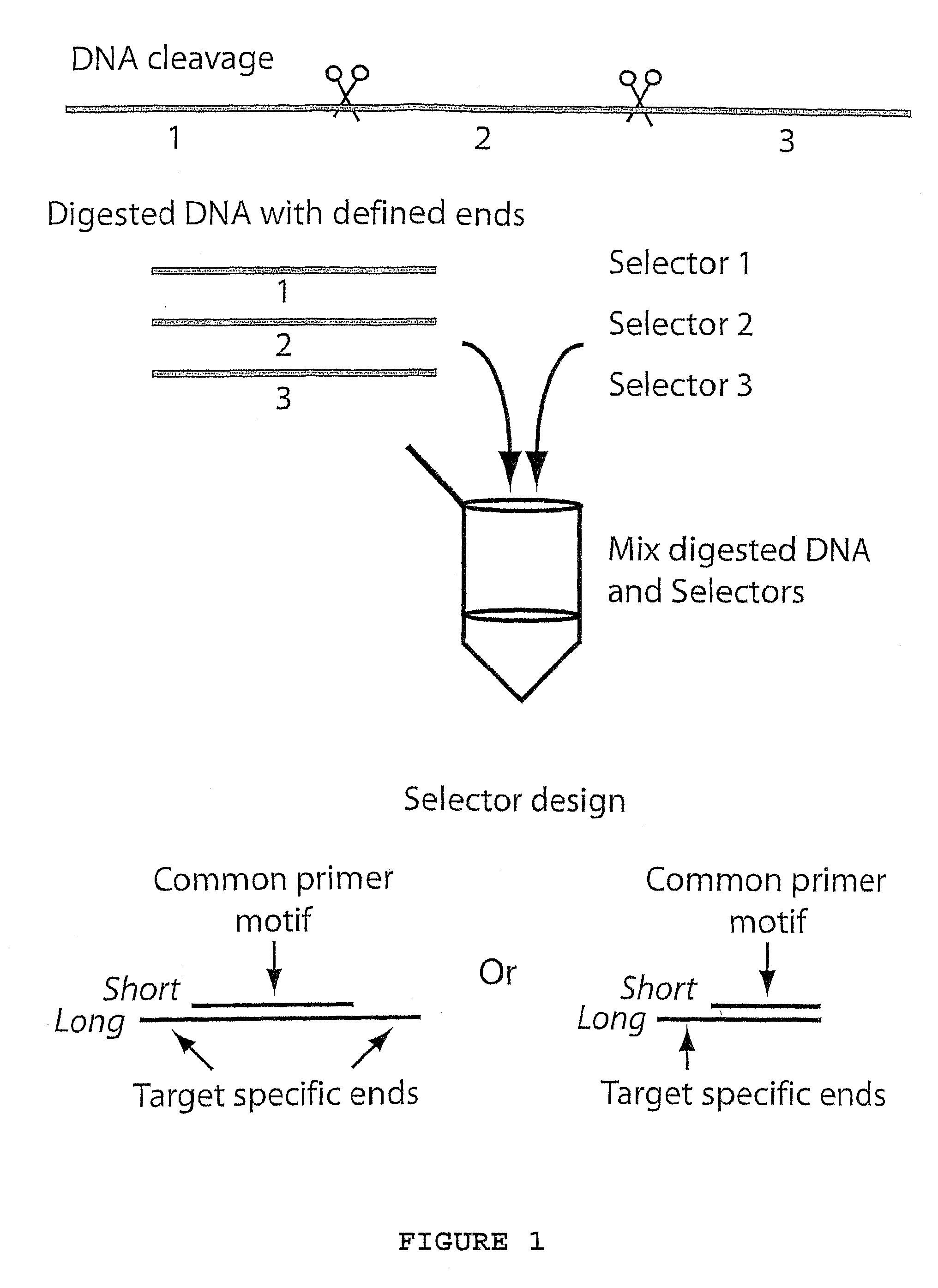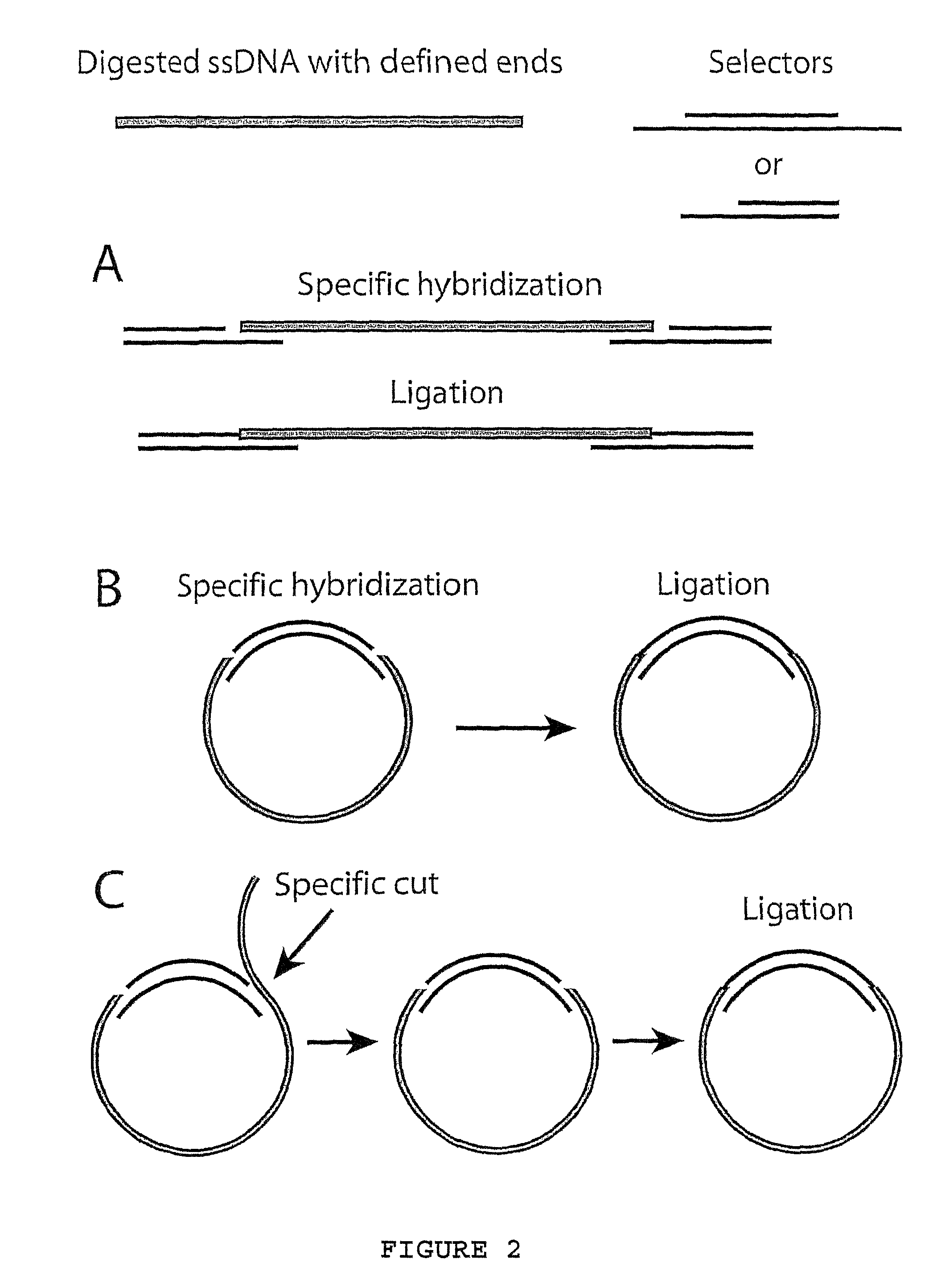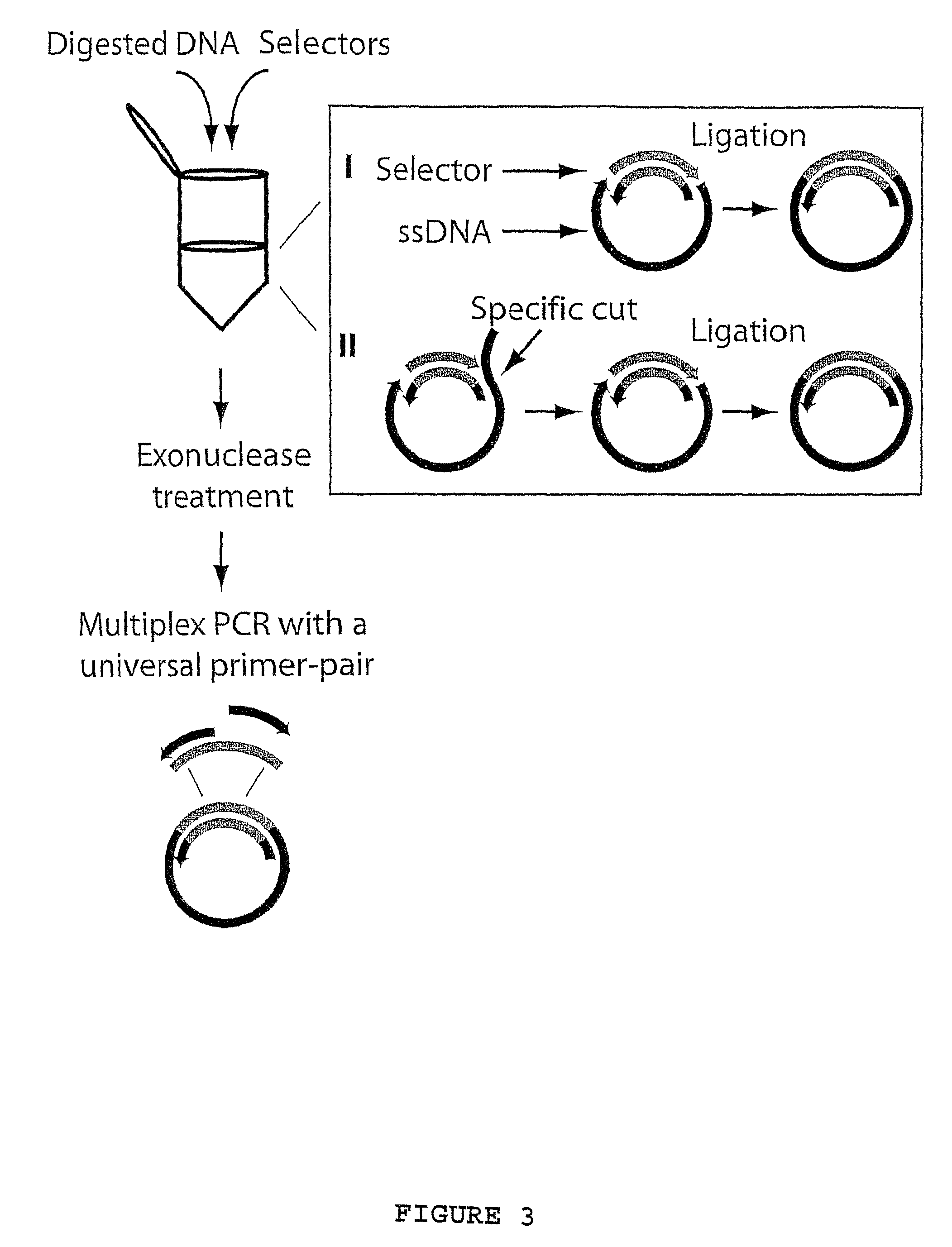Method for amplifying specific nucleic acids in parallel
a specific nucleic acid and amplifying technology, applied in the field of amplifying specific nucleic acids in parallel, can solve the problems of unsatisfactory amplification products, high cost, and time-consuming projects, and achieve the effects of reducing undesired amplification products, reducing amplification reactions, and less target materials
- Summary
- Abstract
- Description
- Claims
- Application Information
AI Technical Summary
Benefits of technology
Problems solved by technology
Method used
Image
Examples
example 1
[0068]The following example illustrates the procedure of the method according to the invention. The example is offered by way of illustration and not by way of limitation.
[0069]Example 1 describes; hybridization and ligation of ninety-six selectors to ninety-six specific target nucleic acid fragments followed by multiplex PCR using one primer-pair, according to FIG. 3. The amplified products were analyzed on microarrays and with gel electrophoresis. The sequences of the primer-pair and the two types of oligonucleotides that comprise the selectors (long and short) are described in Table 1.
[0070]Oligonucleotides and design. Ninety-six cDNA clone sequences, chosen as targets for the selector design, were blasted against the human genome sequence. For each cDNA sequence, the genomic sequence yielding the highest-scoring hit was used as target sequence. The target sequences and an additional 700 nucleotides of sequence information on both sides was downloaded and in silico restriction di...
PUM
 Login to View More
Login to View More Abstract
Description
Claims
Application Information
 Login to View More
Login to View More - R&D
- Intellectual Property
- Life Sciences
- Materials
- Tech Scout
- Unparalleled Data Quality
- Higher Quality Content
- 60% Fewer Hallucinations
Browse by: Latest US Patents, China's latest patents, Technical Efficacy Thesaurus, Application Domain, Technology Topic, Popular Technical Reports.
© 2025 PatSnap. All rights reserved.Legal|Privacy policy|Modern Slavery Act Transparency Statement|Sitemap|About US| Contact US: help@patsnap.com



